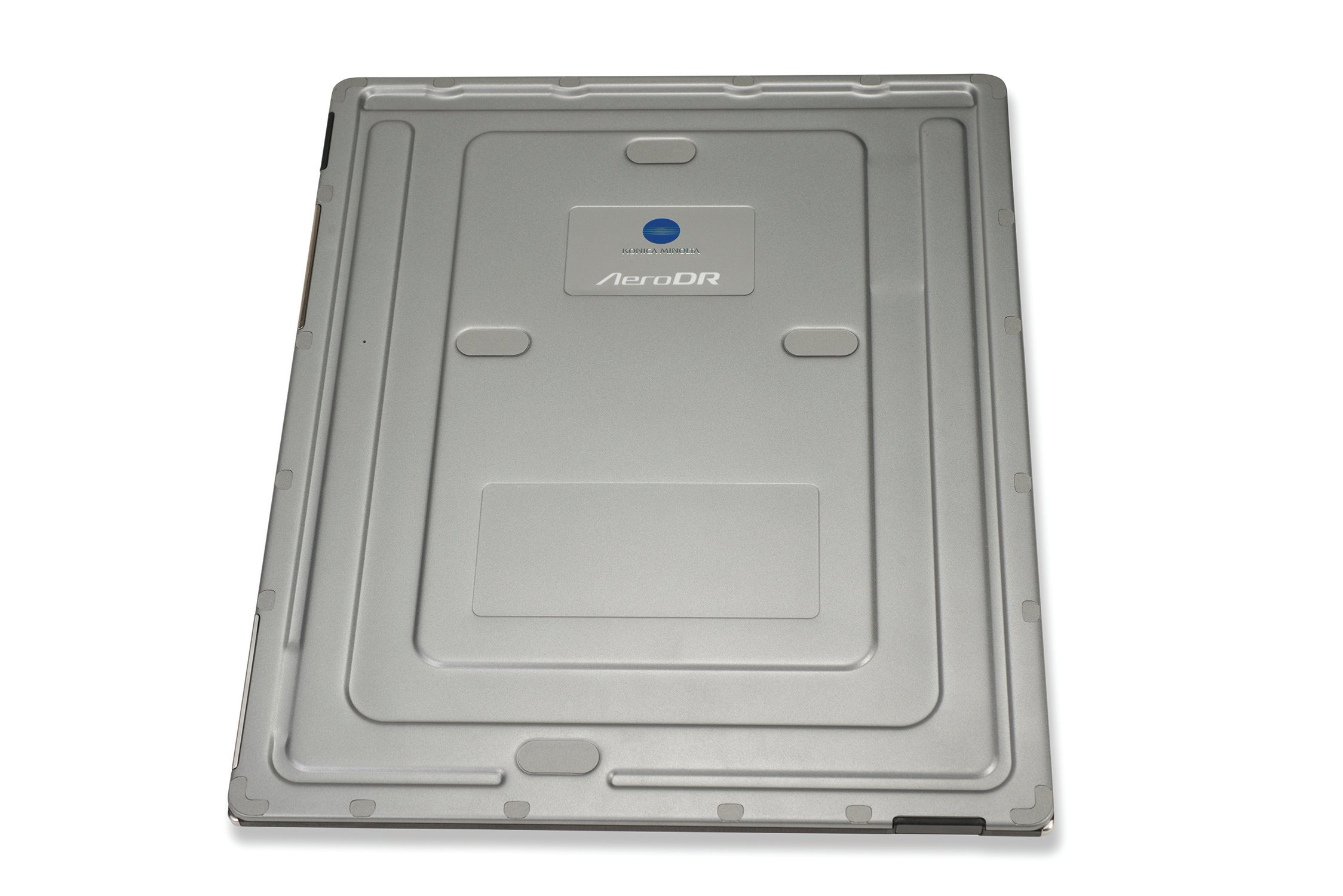
If there was a theme to digital radiography (DR) advances in 2017, it might have been “upgrade now or be left behind.” The first of the year saw the inception of the federal Consolidated Appropriations Act (CAA) of 2016, which among its many provisions imposed a significant reimbursement penalty (20 percent) on Medicare claims for imaging exams done with screen film X-ray systems. As of this year, the law adds a 7 percent reduction for computed radiography (CR) exams that increases to 10 percent in 2023. The penalties are meant to further encourage providers and hospitals to modernize their imaging inventory as healthcare as a whole looks to become more efficient while maintaining good patient outcomes.
These dual goals of increased efficiency and better patient outcomes have driven many of the recent major advances in DR technology, including improved image quality at lower radiation doses and workflow efficiencies to increase patient throughput. These trends were fully evident in the DR offerings at the 2017 Radiological Society of North America (RSNA) annual meeting in November.
Detector Panels and Image Processing
Ultimately, any DR system is only as effective as its detector technology — the backbone and opportunity in digital radiography. Government and industry forces are pushing providers toward DR because it generates a higher-quality image than CR or film systems. It does so at a significantly lower radiation dose than its predecessors, balancing the equation that connects diagnostic certainty and patient safety. Vendors continue to push the envelope of how to maximize image quality while maintaining low dose, and several offered new solutions at RSNA 2017.
Konica Minolta Healthcare Americas, creator of the AeroDR high definition (HD) panels, introduced a brand-new image processing software for its CS-7 platform. The software, dubbed Realism, provides clarity and detail beyond conventional processing, according to Konica Minolta, by independently processing bone and soft tissue data, and enhancing sharpness and contrast to improve visualization of traditionally hard-to-see structures.
Realism is included on the newest detector panels in Konica Minolta’s lineup, a 10 x 12-inch and a 17 x 17-inch AeroDR HD panel. The smaller panel is engineered for the neonatal intensive care unit (NICU) and/or imaging fine structures such as the extremities; the 17 x 17 is for larger anatomical areas such as the chest and abdomen. All AeroDR HD panels offer the option to switch between High Definition (HD) and High Dynamic Range (HDR) imaging. HD provides images with a 100 micron pixel size for a high level of detail, while HDR imaging aggregates the data from four pixels for a wider range of grays, providing a smooth image that allows clinicians to detect subtle differences in soft tissue.
Just before RSNA, Canon launched the 10 Series wireless digital detector panels, including the CXDI-710C, CXDI-810C and CXDI-410C. The panels are the lightest in Canon’s arsenal, coming in a full 2 pounds lighter than the previous generation, according to the company. The lightweight and the new ergonomic handgrips carved directly into the detector make the panel extremely easy to carry around.
Workflow Improvements
DR vendors at RSNA 2017 also demonstrated numerous ways their technology can help radiology departments maximize the number of patients they can see in a day.
Many DR panels offer some capacity for storing images directly on the detector. The Canon 10 Series, for instance, can offer limited, temporary on-board image storage capability when operated in standalone mode. The panels also offer stitching as a standard feature — combining up to four images together into one to increase the size of the image viewing area. This is a feature becoming more common with DR technology, allowing full-body exams without any image artifacts.
For detector panels, uptime is a primary consideration — the panels’ utility will be limited if they are frequently in need of recharging or if they are fragile enough to break easily when dropped or spilled on. Battery life and durability have been a primary focus for further improvement in recent years, with significant advances in both areas. Carestream extended the battery life of its new DRX-Revolution Nano Mobile by using a variation on the traditional lithium-ion battery (LIB) — a lithium iron phosphate (FePO4) battery. This type of LIB has a greater power density (the rate at which energy can be drawn from it) than more common lithium cobalt oxide batteries, ensuring a longer life for the system. As an added benefit, lithium iron phosphate batteries are cheaper than lithium cobalt and more environmentally friendly. The Nano and other DR systems have also added onboard charging capabilities in recent years. In terms of durability, many panels are now IPX7-rated for waterproofing and are insured against damage resulting from drops.
Analytics Drive Improved Performance
As healthcare shifts from a volume-based to a value-based system of reimbursement, performance data and analytics are taking on greater importance for providers to both offer proof of high performance and find areas for improvement. Dozens of vendors offer some kind of analytics package for radiology department performance, but at RSNA Konica Minolta became one of the first to offer a modality-specific analytics package for DR.
AeroRemote Insights tracks the performance of all KMHA systems or panels in an organization’s inventory to help providers ensure they are maximizing usage. The web-based service offers easy-to-digest information on productivity, user performance and AeroDR system health at a glance from any workstation or mobile device. Administrators can drill down to assess the performance of individual technologists, assess specific time periods to determine throughput rate and even ascertain repeat exam rates by scan type.


 April 13, 2024
April 13, 2024 








